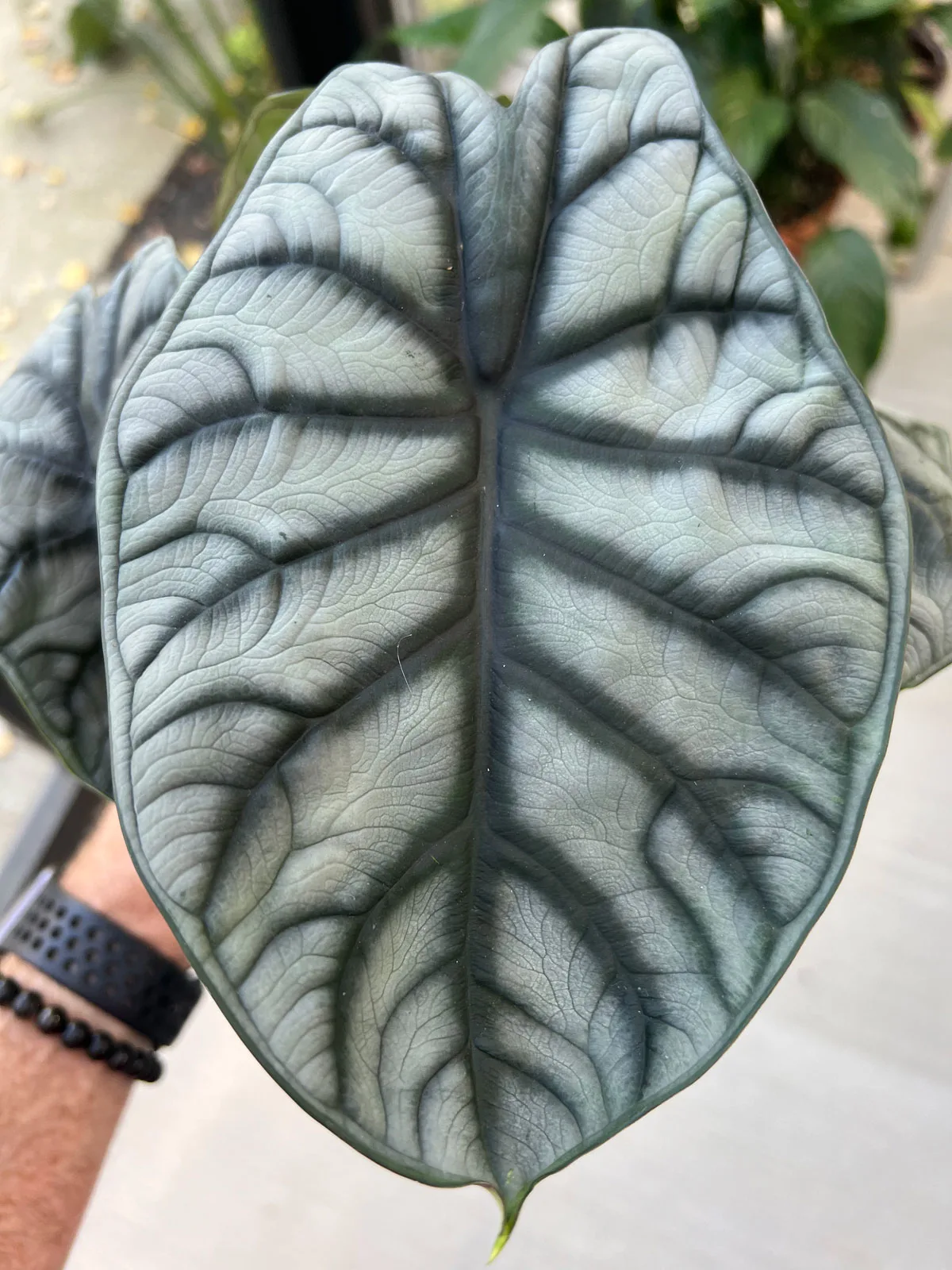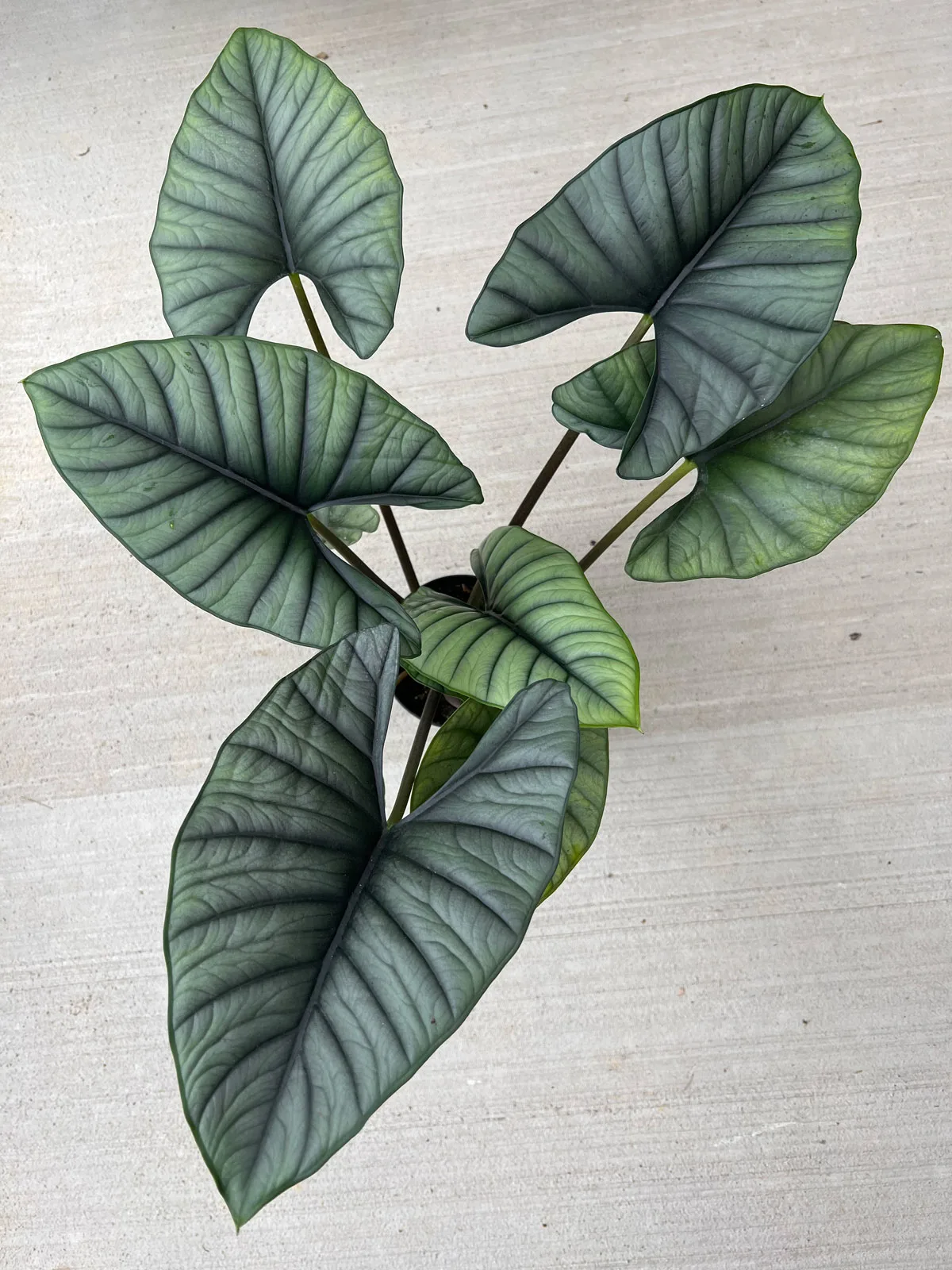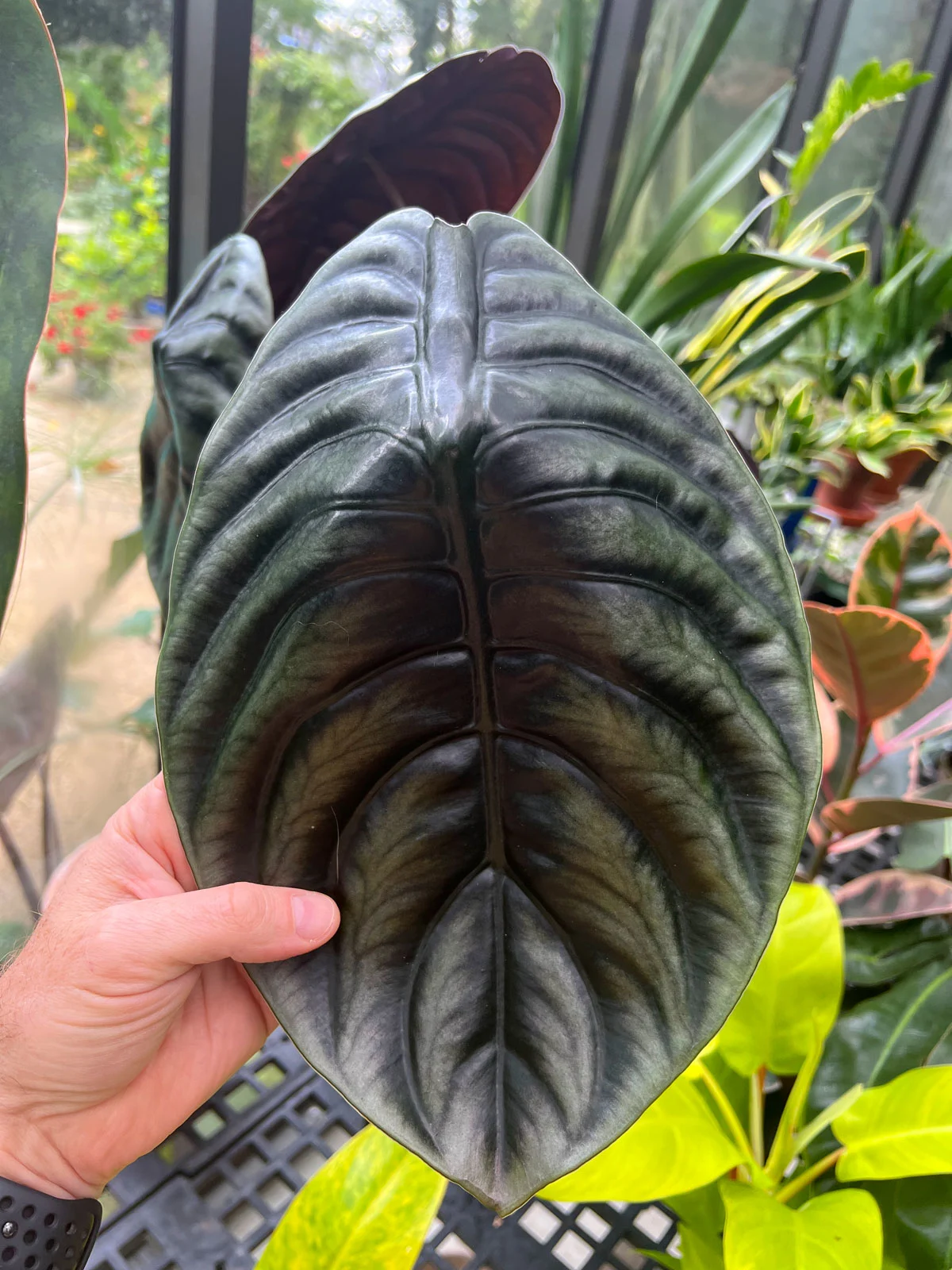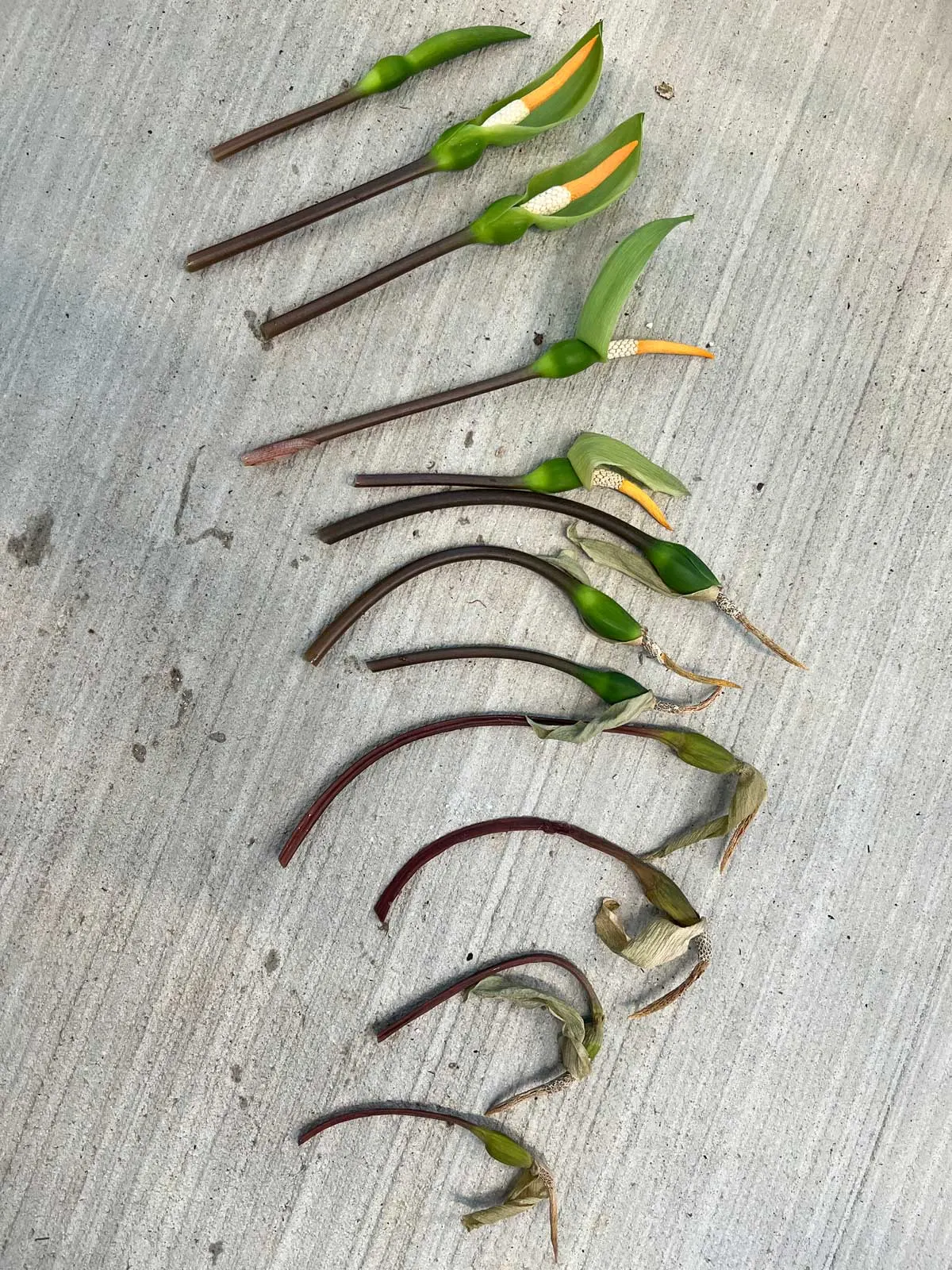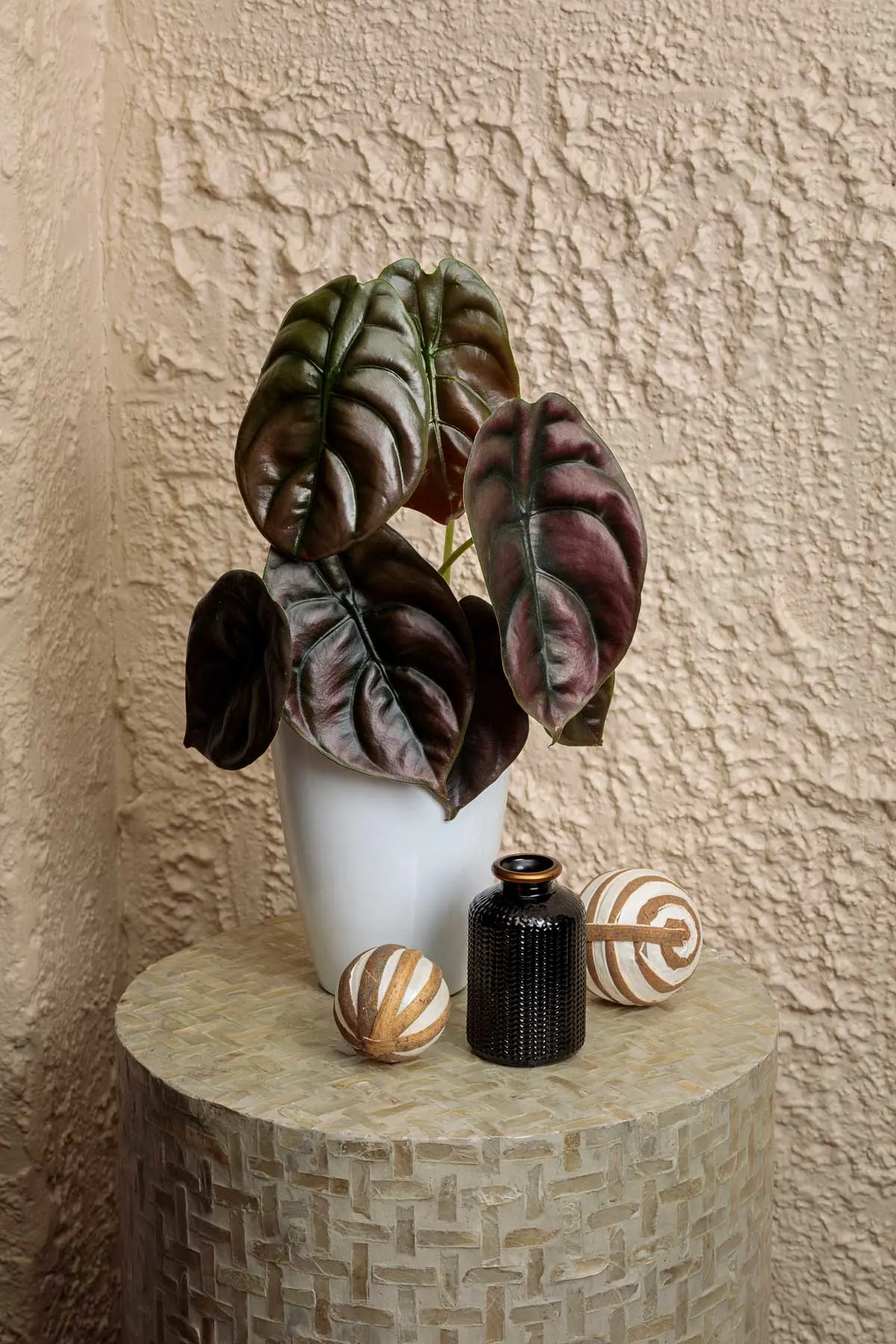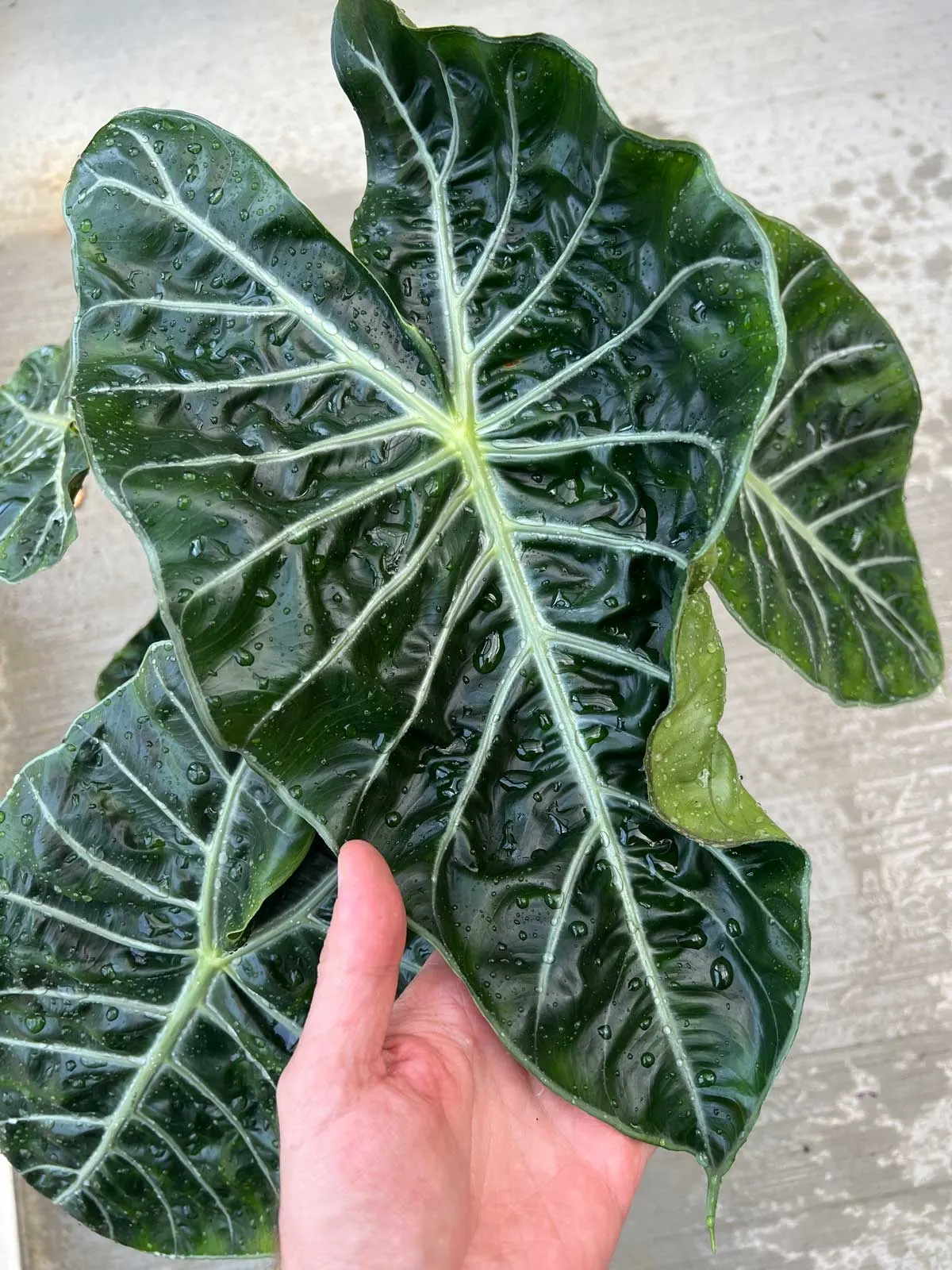Some of the links in this post may be affiliate links.
Alocasia melo is a striking species of Alocasia with unique, thick, dark leaves that almost feel like plastic. It is a smaller growing Alocasia, so it’s perfect for smaller spaces. With so many beautiful Alocasia plants, this one is a standout! Keep reading to learn more about the growth and care of this special plant.
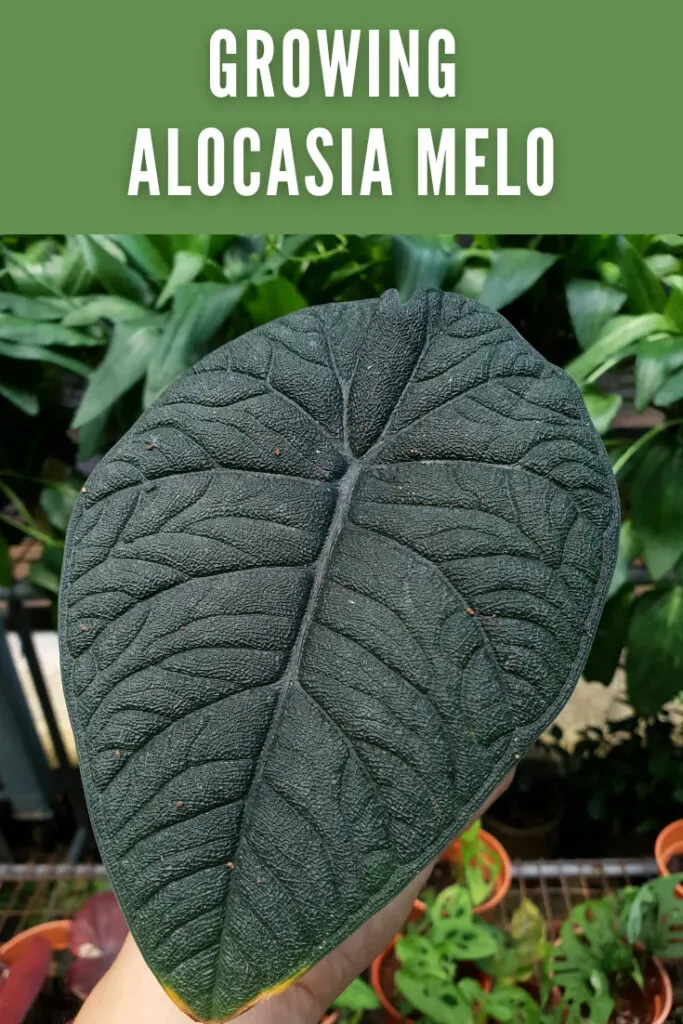
Table of Contents
NATIVE HABITAT AND GROWTH HABIT
Alocasia melo is native to steamy Borneo, and it grows in a wet, tropical ecosystem. It’s always valuable to know where plants are native to, because this helps us understand the growing conditions that they need to thrive.
Before I get into the care of this plant, let’s take a look at a closeup of the foliage. If I saw the photo below, I could mistaken it for a car tire!
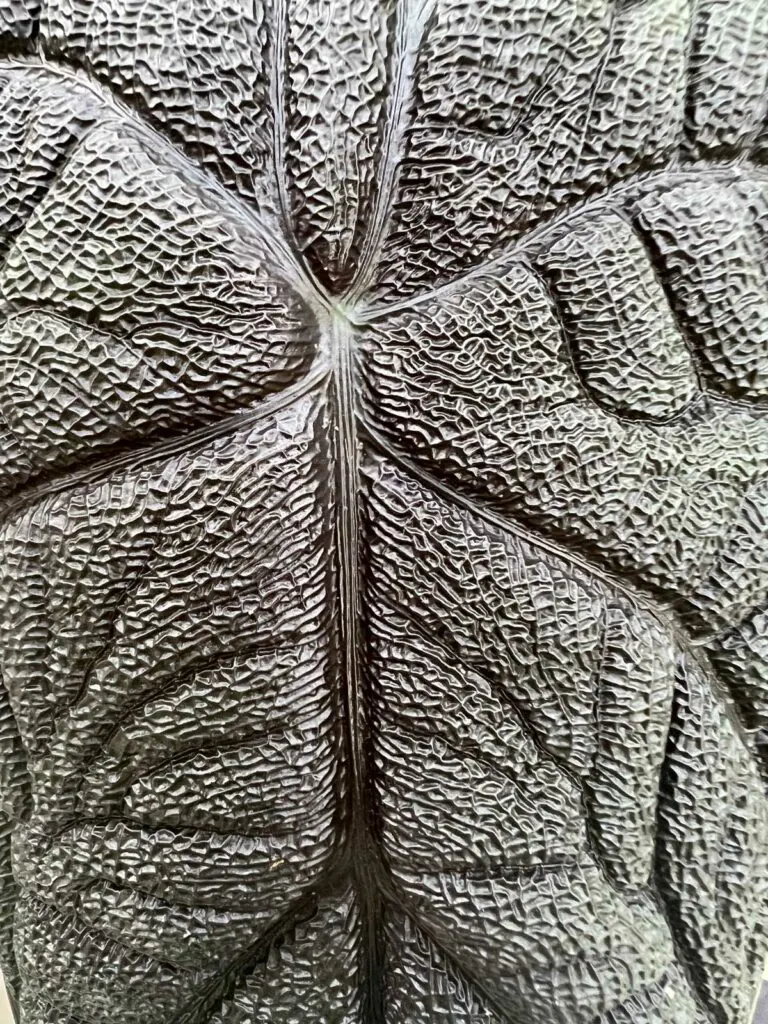
The leaves are very thick and heavily textured, and if you feel the leaves, it even feels like a fake plant. It is truly a unique, unusual beauty.
The newer leaves are a lighter green, and they darken to a beautiful, rich, dark green which almost appears black.
It is sometimes known as Alocasia rugosa (due to the rugose, or rough texture of the foliage), but the accepted name for this species is Alocasia melo.
Alocasia melo is also considered to be one of the “jewel alocasia” plants. This term simply describes smaller growing Alocasia species and varieties. It will typically grow between 1 to 2 feet tall indoors under good care.
ALOCASIA MELO CARE
1. LIGHT
In nature, this plant grows on the forest floor of tropical, lowland rainforest. So this is definitely not a plant that wants a ton of direct sun exposure.
That being said, in a home, we need to adapt because indoors, there isn’t as much light as we think. Even direct sun indoors (by virtue of passing through windows), loses a lot of intensity.
If you’ve read elsewhere that Alocasias don’t like direct sun, this is not the case indoors. Outdoors, you definitely don’t want much direct sun, if at all, but indoors, Alocasias benefit from some direct sun exposure (because it is much weaker than sun exposure outside).
At a bare minimum indoors, place your Alocasia melo right in front of a window that gets no direct sun, such as a North facing window in the northern hemisphere (or the reverse in the southern hemisphere, which would be a South facing window).
However, 2-3 hours of direct sun in the morning (such as an Eastern facing window) would be great. Even late afternoon sun is fine. Just avoid mid-day sun which is strongest.
In the wintertime, with short days and weaker sun, you can safely provide even more sun exposure indoors.
2. WATERING
Alocasia melo grows on rocky surfaces in nature, and thus is used to having more air at its roots. So this plant can be kept a little drier than most other Alocasia types.
Like any Alocasia, if you keep them too dry, it will start to trigger a period of dormancy, and the leaves will start to turn yellow (starting with the older, outermost leaves). If you see this, and you notice that your potting mix is super dry, go ahead and give it a nice, thorough watering.
Otherwise, try and only let the top quarter to top half of the total potting mix dry out before watering again. Avoid complete dryness.
Never allow your plant to sit in water for extended periods of time as this can cause root rot in Alocasias.
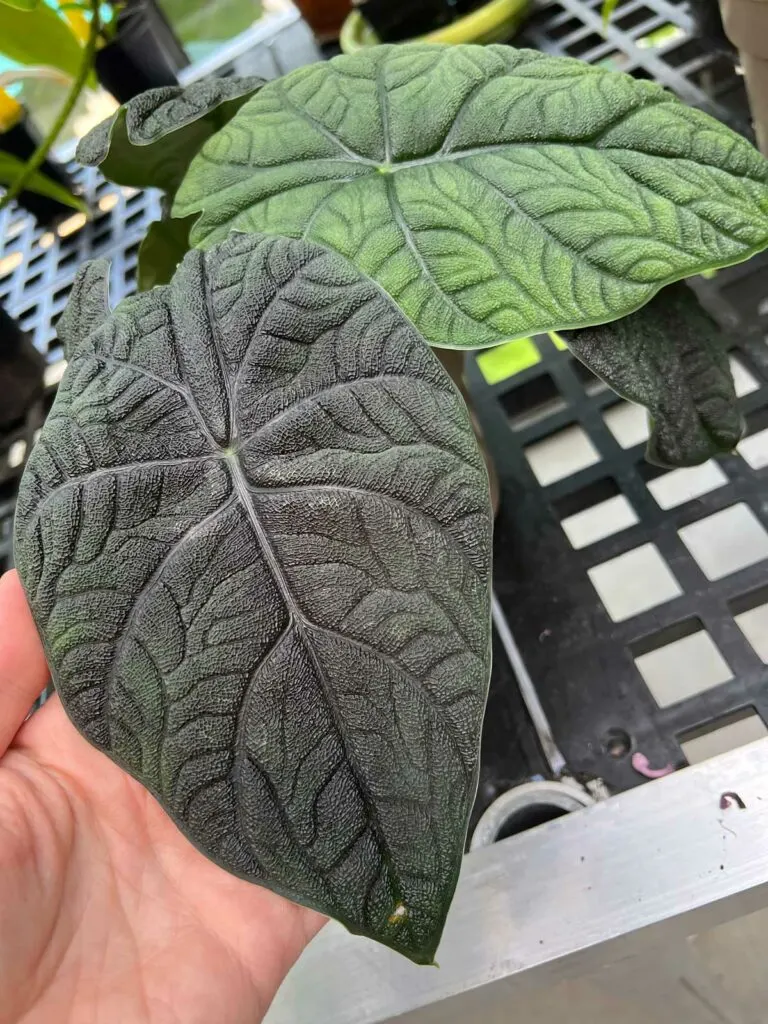
3. FERTILIZER
I’ve been using Dyna-Gro Grow. I use it dilutely at 1/4-1/2 teaspoon per gallon of water at nearly every watering. I’ve been using this fertilizer for years and it’s truly amazing and you’ll see a difference in your plants.
Dyna-Gro Grow contains all the macro and micronutrients that plants need, and it is urea-free so there is no risk of burning when used as directed. Try it out and you will thank me later!
During the wintertime if your plant has slowed down and isn’t growing much, you can refrain from fertilizing until days get longer again and growth resumes.
4. TEMPERATURE
In its native environment, temperatures will range between 48°-88°F (9°-31°C) during the day, and no lower than 45°F (7°C).
So keep your melo warm, and try and avoid any cold drafts from vents or opening and closing doors during cold weather.
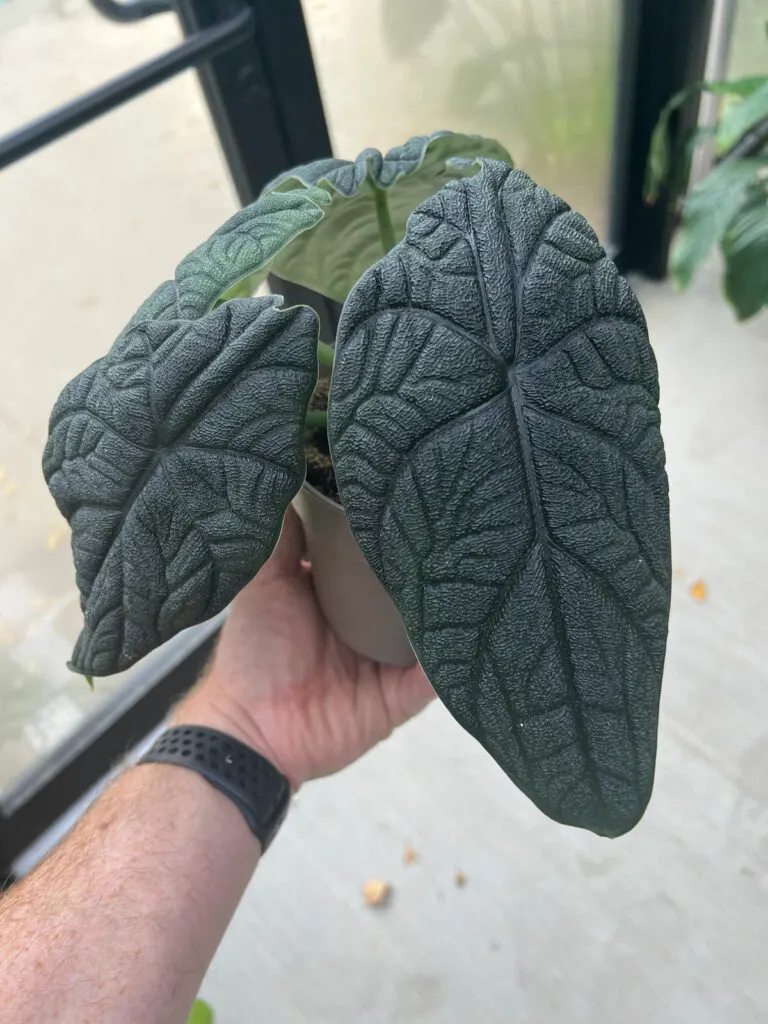
5. HUMIDITY
The humidity in its natural environment in Borneo usually ranges from 60-70% relative humidity. Increasing humidity to this level in your plant room will benefit any Alocasia.
Misting does nothing to
6. POTTING MIX
This particular Alocasia grows in what is called ultramafic rock on a thin layer of soil near streams. In the home, a typical, chunky aroid mix works well.
Do not plant in straight, pre-bagged indoor potting mix like Miracle Gro or Espoma without amending. You can use equal parts of a potting mix, perlite and orchid bark.
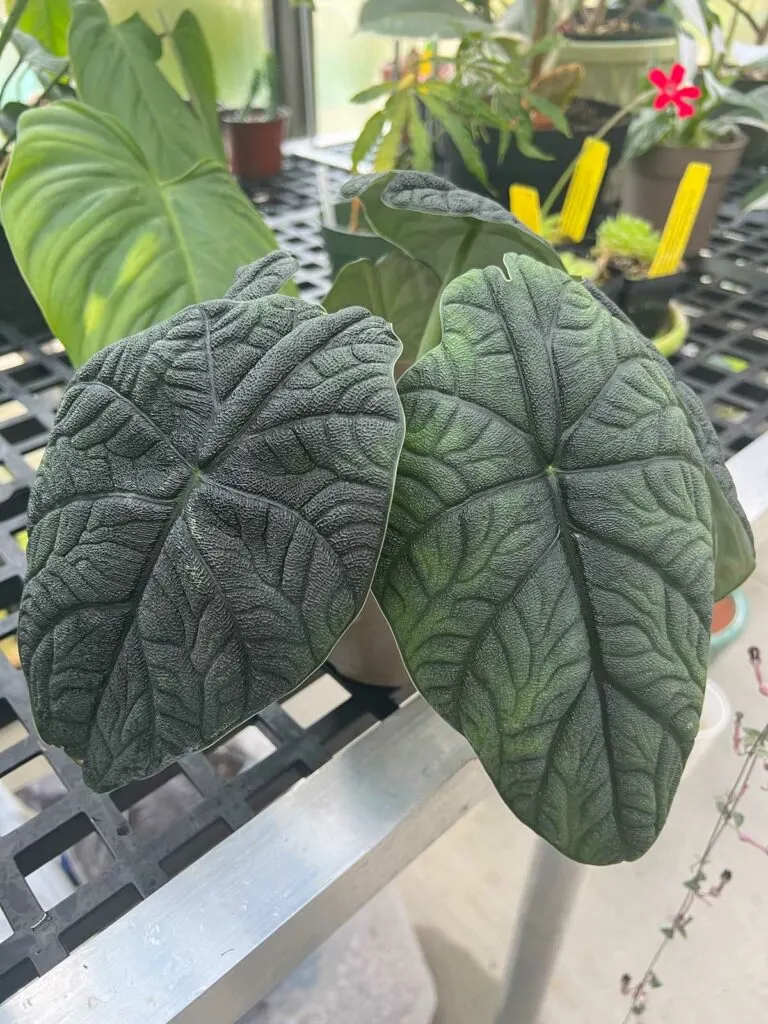
If you want a potting mix that you can use straight out of the bag, eliminating any guess work, I highly recommend the specialized potting mix blends from Oh Happy Plants.
Their Pray For Us blend is specially designed for plants that hate to dry out completely, but that also don’t want to drown. I’ve started to use their specialized blends, and I just absolutely love them!
You can use code OHIOTROPICS for 10% off your order.
The potting mixes are amazing, use sustainable ingredients, and actually have nutrients in them for healthy plant growth. Check out the Pray For Us blend. Your plants will be happier for it!
7. PROPAGATION
Like any Alocasia plant, Alocasia melo produces offshoots usually right below the soil line. They will produce corms (similar to bulbs) and will reproduce that way. While you can separate the resulting new plants, the plant will do better if you leave everything alone.
If you do want more plants, it’s ok to separate the baby plants, but wait until they’re a good size first before separating, maybe half the size of the original plant.
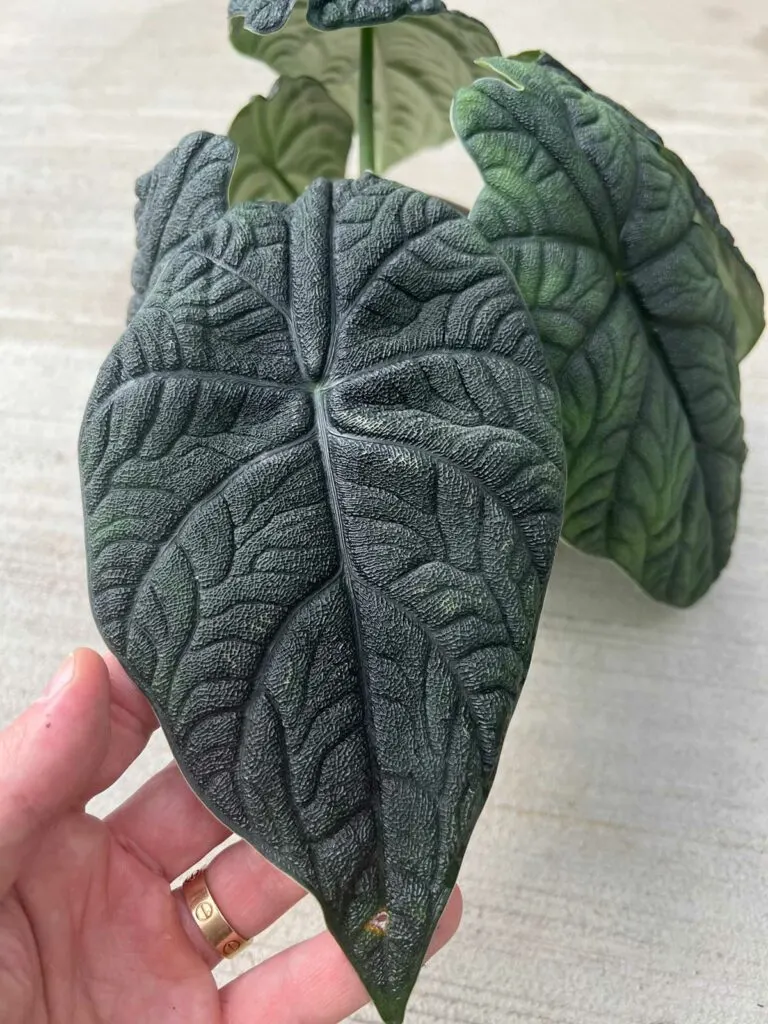
COMMONLY ASKED QUESTIONS
Alocasia maharani vs melo
Alocasia melo looks similar to Alocasia ‘Maharani’, except melo has rounder, more thickly textured leaves.
Is Alocasia melo toxic?
Like most/all aroids, Alocasia melo is toxic and should be kept away from pets and small children.
Where can you purchase Alocasia melo?
Proven Winners produces this plant. Although you can’t purchase directly from them, you can find a local retailer near you on the Proven Winners website.
I hope you’ve enjoyed this post on Alocasia melo. Do you have a melo? Comment below. I’d love to hear!

